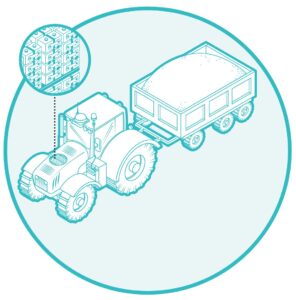As the electric grid continues to evolve, new technologies are being developed to help advance the grid of the future. One of these technologies is a new form of battery storage technology called the iron-air battery, which could potentially provide long-duration energy storage for hundreds of hours.
Current battery technologies can only offer storage for tens of hours, meaning the innovative iron-air battery could provide energy for roughly 10 times longer than existing grid-scale batteries. This new technology could help ensure grid reliability even with extreme weather, such as hurricanes or powerful thunderstorms.
Long-duration energy storage will also be crucial for adding more solar and wind energy to the grid since renewable energy is dependent on the weather and may not always be available when we need it. New iron-air batteries could provide the missing link by storing excess energy to be used when the sun isn’t shining or the wind isn’t blowing.
The battery technology itself is made up of thousands of small iron pellets that develop rust when exposed to oxygen. This process discharges the battery. When the oxygen is removed, the pellets revert back to iron, which then charges the battery.
According to Form Energy, the startup company developing this new technology, this process is known as the principle of “reversible rusting.” Since the battery technology mainly uses the abundant and cheap resources of water, air and iron, the technology is relatively low-cost. These resources also make the technology relatively safe since there are no heavy metals, and also make the batteries simpler to recycle.
A key feature of these batteries is their low cost, with Form Energy promising a price of less than $20 per kWh. That price is about one-tenth the cost of lithium-ion battery technology, which is currently the cheapest battery technology on the market.
Individual iron-air batteries are about the size of a washing machine, making it easy to group many batteries together into a larger, scalable system. The size of the battery module group can vary, depending on the storage needed at a specific site. This means the batteries can be placed in a variety of areas, from rural to urban, to meet energy needs.
While this technology may be a solution for long-duration energy storage, the battery is not yet ready at the commercial level—although it is close. Form Energy estimates the battery should be ready for mass production by 2025. As a pilot project to test this groundbreaking technology, Form Energy is working with Great River Energy, a generation and transmission cooperative located in Minnesota. The 1 MW/150MWh project is anticipated to go live in 2023.
Given the importance of long-duration energy storage for future of the grid, other start-ups are also looking to develop long-duration battery storage technology.
Time will tell if the iron-air battery, or any other long-duration battery, becomes successful as a new emerging technology. In the meantime, electric utilities can start to understand where this technology may potentially fit within their own systems to make the grid more resilient and reliable. Whether this technology becomes mainstream or not, utilities will continue finding ways to provide affordable, long-duration storage as the electric grid continues to change.










